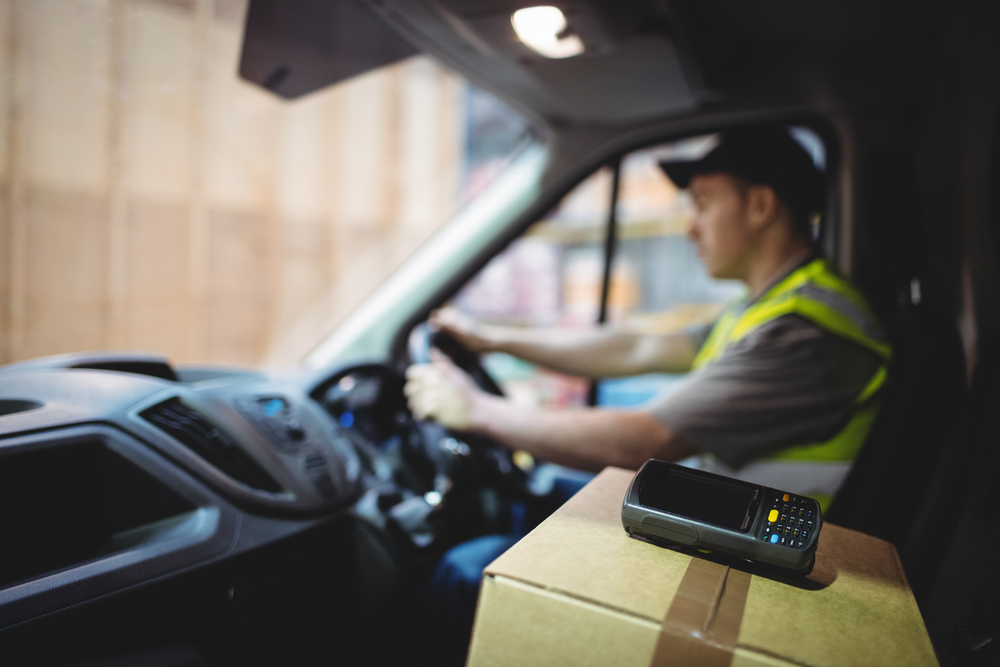As the meteoric rise of ecommerce affects the supply chain, it, too, challenges last-mile delivery. According to Brie Carere, FedEx's executive vice president and chief marketing and communications officer, ecommerce drives about 90% of the growth in the parcel market with an expected 100 million packages delivered per day by 2026. Last-mile delivery is a critical part of the supply chain, but it is also the most expensive and most time-consuming step of the shipping process. Striving to become more profitable and efficient, last-mile delivery is rapidly evolving to accommodate the supply chain.
What Is Last-Mile Delivery?
In the long lifecycle of a product from manufacturer to warehouse to delivery to the consumer, last-mile delivery describes the last leg of that journey, typically from warehouse to doorstep. The goal of last-mile delivery is speed; delivering packages efficiently results in happy consumers and lower operational costs.
Previously, warehouses primarily shipped packages with one of the “Big 3” carriers: USPS, UPS, or FedEx. However, with skyrocketing parcel demand, these traditional carriers are finding it impossible to handle all the volume themselves. Noted in our previous blog article “Top 5 WMS Integration Types,” the “Big 3” not only continue to raise their rates, driven by industry-wide rising transportation and fuel costs, but have also stopped giving volume discounts to smaller shippers, making partnerships with them more costly and unstable.
Why Should 3PLs Care About the Evolution of Last-Mile Delivery?
Brands often partner with third-party logistics (3PLs) warehouses for their shipping acumen. 3PLs negotiate shipping rates with last-mile carriers on behalf of their customers and can often get discounted rates based on volume even for smaller shippers. But times are changing, and 3PLs need to evolve alongside consumer demand and the supply chain to attract and retain customers.
The Amazon effect has conditioned consumers to want free, fast shipping in two days or less, putting pressure on 3PLs to similar low-cost expedited shipping options to help their customers compete with the ecommerce giant. Amazon can do this by owning last-mile delivery for most of its products. More recently, the Amazon Flex program–which relies upon crowdsourcing much like Uber or DoorDash, but the drivers deliver packages instead of people or take out–is setting another trend in the supply chain with how it approaches last-mile delivery. Companies relying upon crowdsourced delivery are nothing new–Postmates (now an Uber company) has been doing it for a decade–but bringing crowdsourcing into parcel delivery is innovative and influential as established companies begin to expand to different verticals (e.g., food delivery to parcel delivery).
New Last-Mile Delivery Players
As the world of last-mile delivery changes, 3PLs need to be aware of the new players in the field so they can continue to offer shipping expertise to their clientele. In addition to resellers like Pitney Bowes and Buku, who purchase shipping labels, mostly from USPS, to resell them to shippers, a wave of startups have emerged to offer complete alternatives to the “Big 3” to try to tackle the challenge of last-mile delivery.
The central challenge of last-mile delivery is that delivery drivers carry many small packages to many different addresses, creating more stops, more complicated routes, more idle time, and more time on the road for drivers than in any of the other phases of shipping. Not to mention, companies must have a large fleet of drivers to deliver even a small number of packages because of how long it takes to deliver a single package.
New startups are addressing these obstacles head-on by leveraging new technologies. Some of these companies do not handle deliveries themselves, but rather create software that other new delivery companies can use. Onfleet, a software startup, developed an all-in-one last-mile delivery management platform that optimizes delivery routes and auto-dispatches fleets according to these planned routes to reduce the number of delivery drivers needed each day. Other companies like Locus and Circuit also have proprietary algorithmic delivery routing to strategically and scientifically plan routes for fleets and couriers.
In addition to algorithmic delivery routing, other technology-centric advancements in last-mile delivery utilize robotics. Nuro developed a fully autonomous delivery vehicle about the size of an SUV and can accommodate larger deliveries, while Starship Technologies has self-driving robots with a range of four miles that make small deliveries ordered through an app by the consumer. Finally, Matternet established the world's first city-wide drone network in Abu Dhabi for the purpose of last-mile delivery.
How to Adapt to the Last-Mile Delivery Evolution
What do 3PLs need to deal with these changes in the last-mile delivery sector? The answer is simple: shipping software with multi-carrier parcel management. Better yet, 3PLs should look for a warehouse management system (WMS) software that has shipping capability built in, like Extensiv 3PL Warehouse Manager. Small Parcel Suite in Extensiv 3PL Warehouse Manager allows users to integrate with multiple carrier accounts for both the warehouse overall and each customer, and with built in rate shopping with negotiated rates included, 3PLs will always get the best shipping rate. Not only this, but the list of carriers supported for integrations in Small Parcel continues to grow as new last-mile parcel delivery companies emerge.
Want to learn more about Extensiv 3PL Warehouse Manager and how it can benefit your warehouse’s last-mile delivery solutions? Request a demo today!
-
You’ll read about:
Be the first to know
Subscribe to our newsletter





